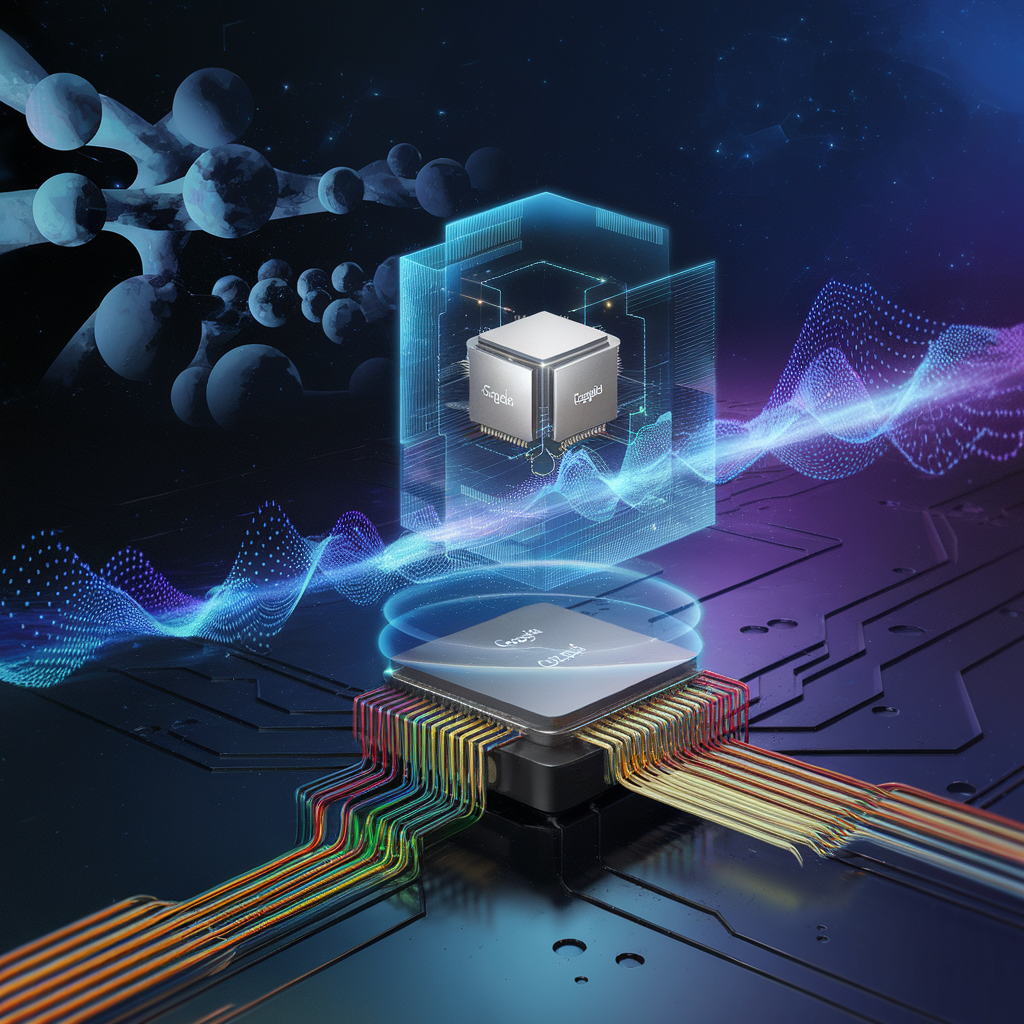Quantum Realities: How Google’s Willow Chip Could Unlock the Secrets of the Multiverse
In a world where science fiction often blurs the lines with reality, the concept of the multiverse has captivated the imagination of scientists and dreamers alike. But what if the key to understanding this vast, interconnected web of realities lies in the hands of a quantum chip? Enter Google’s Willow chip—a groundbreaking advancement in quantum computing that could potentially unlock the secrets of the multiverse.

What is Google’s Quantum Chip?
Google’s Willow chip represents a significant leap forward in the realm of quantum computing. Unlike traditional computers that process information in binary (0s and 1s), quantum computers utilize qubits, which can exist in multiple states simultaneously. This unique property allows quantum computers to perform complex calculations at speeds unimaginable with classical computers.
The Willow chip is designed to enhance the capabilities of quantum processors, featuring advanced error correction and improved qubit connectivity. These enhancements not only increase computational power but also pave the way for more sophisticated algorithms that can tackle problems previously deemed unsolvable. As researchers continue to explore the potential of quantum computing, the Willow chip stands at the forefront, promising to revolutionize fields ranging from cryptography to drug discovery.
Overview of the Multiverse Concept
The multiverse theory posits that our universe is just one of many, each existing in its own separate reality. This concept has various interpretations, including the many-worlds interpretation of quantum mechanics, which suggests that every quantum event spawns a new universe. In this view, every choice we make creates a branching path, leading to an infinite number of parallel realities.
Philosophers and physicists have long debated the implications of the multiverse. If true, it challenges our understanding of existence, free will, and the nature of reality itself. The multiverse theory invites us to ponder profound questions: Are there alternate versions of ourselves living out different lives? What happens in those other realities?
Quantum Computing and the Multiverse Connection
The connection between quantum computing and the multiverse is both fascinating and complex. At the heart of this relationship lies the many-worlds interpretation, which posits that all possible outcomes of a quantum event occur, each in its own separate universe. This interpretation aligns closely with the principles of quantum computing, where qubits can represent multiple states simultaneously.
As Google’s Willow chip advances quantum computing, it may provide the tools necessary to explore these multiverse theories more rigorously. By simulating quantum systems and their interactions, researchers could gain insights into the nature of reality and the potential existence of parallel universes. The computational power of the Willow chip could enable scientists to model complex quantum phenomena, shedding light on the mysteries of the multiverse.

Relevant Studies and Theories
Several key studies have explored the intersection of quantum mechanics and the multiverse. One notable example is the work of physicist Hugh Everett III, who first proposed the many-worlds interpretation in the 1950s. His groundbreaking theory suggested that every quantum event creates a branching of realities, leading to an infinite number of universes.
More recent research has built upon Everett’s ideas, examining the implications of quantum entanglement and superposition. Studies have shown that quantum systems can exhibit behaviors that seem to defy classical logic, further supporting the notion of multiple realities. As quantum computing technology advances, researchers are increasingly able to test these theories through simulations and experiments.
The potential applications of quantum computing in understanding the multiverse are vast. For instance, researchers could use quantum algorithms to analyze the probabilities of different outcomes in quantum events, providing deeper insights into the nature of reality. The Willow chip’s capabilities may allow scientists to explore these questions with unprecedented precision.
Conclusion
As we stand on the brink of a new era in quantum computing, Google’s Willow chip offers a tantalizing glimpse into the possibilities that lie ahead. By harnessing the power of quantum mechanics, we may unlock the secrets of the multiverse and gain a deeper understanding of our place in the cosmos.
The implications of this research extend far beyond theoretical physics; they challenge our perceptions of reality, existence, and the choices we make. As we continue to explore the frontiers of science, the Willow chip could be the key that opens the door to a multiverse of infinite possibilities.

Are you ready to dive into the mysteries of the multiverse? Join the conversation and share your thoughts on how quantum computing could reshape our understanding of reality!
Keywords
- Google’s quantum chip
- multiverse theory
- quantum computing
- many-worlds interpretation
- quantum mechanics
Call to Action
If you’re intrigued by the potential of quantum computing and the multiverse, subscribe to our newsletter for the latest updates and insights in the world of science and technology!








